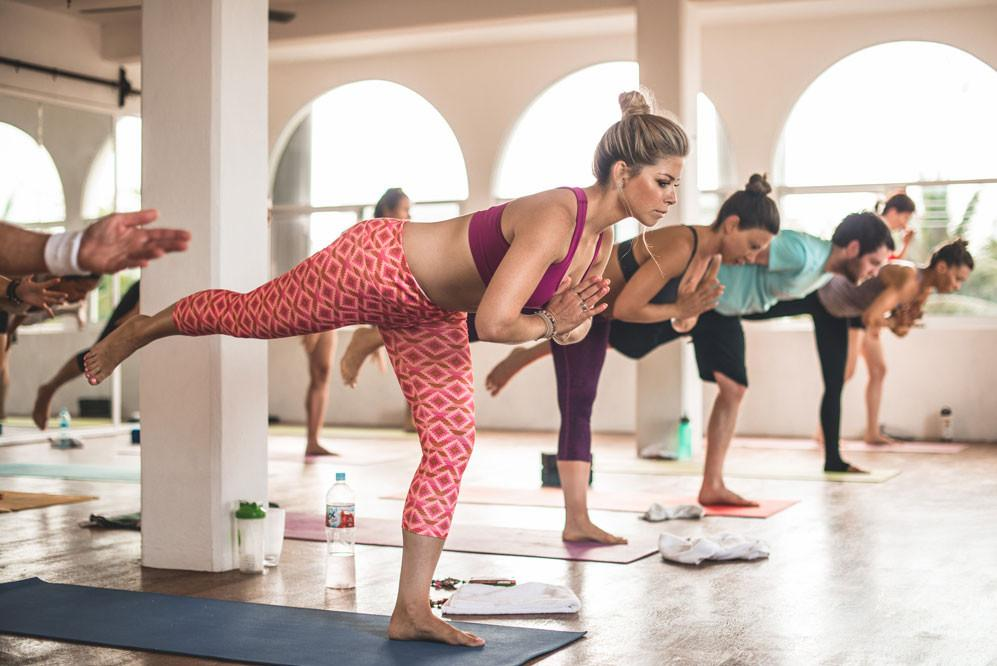There was a time when I cared quite a bit about which style of yoga I practiced because the style of yoga I practiced defined the practice of yoga for me. I had such a rigid idea of what yoga was back then.
It was this not that; it looked like this, not that; it was taught like this, not that.
Then one day I took a yoga class that started with my saying “This isn’t yoga!” (oh no, it didn’t fit into my small view of what yoga was at all) and ended with “Ah, THIS is yoga!!!”
Imagine my surprise when my definition of yoga went up on smoke in a mere 35 minutes. After that I became intensely curious about other styles of yoga and basically practiced and/or studied many of them in the years that followed.
As time went on, I found myself caring more about how the practice made me feel rather than what it looked like.
Then my interest was igniting by yoga therapy and I got further and further away from identifying with a particular style of yoga and focused more on one of the definitions of yoga — relationship.
I focused on one’s relationship to body, mind, emotions, and breath. I stopped believing in one-size-fits-all yoga and approached yoga as something to be applied to the individual. My own practice consists of various styles at various times.
During this time of defining and redefining yoga for myself, I saw yoga linked to many different practices.
Everyone seemed to be teaching some sort of yoga combination, whether it was yoga combined with acrobatics, rebounding, running, martial arts, or dance.
Yoga purists everywhere cringed as yoga became a marketing vehicle for various exercise routines and hot new fitness trends.
At times I walked this line myself, often adding more fluid movement into my own practice. I became somewhat cautious about when I used the term yoga to define my practice (or parts of it).
Because of this blog, every day I get pitched on practices and/or products that use the yoga calling card to gain the attention of yoga lovers everywhere.
Yes, it’s become a bit of a yoga free for all.
Heck, it makes me want to stop using the word “yoga” altogether as a practice descriptor.
There are days that it feels like the word ceases to mean anything.
Then I remember back to training that defined yoga as attention (the ability to focus the mind in a chosen direction for a desired period of time) and realize that many things can be defined as yoga.
And really — who am I to judge? I’m not the yoga police, after all.
And every now and again, something with the yoga calling card catches my eye and I take a closer look. Ray Rizzo and his book, Weightlessness: Integrated Exercise: Yoga, Pilates, and Chi Kung.
For description sake, Weightlessness is a practice defined as a “beginner to an intermediate system that combines some of the most efficient and effective mind/body practices from around the world.”
What made me want to know more was the copy on Ray’s DVD, Weightlessness: Volume I. Yoga and Chi Kung: “The style is no style.”
The me of the past would have dismissed this work as yet another attempt to market some new combination of practices using the word yoga in the title but the been-there-done-that me wanted to see more.
I read the book and watched and practiced along with the DVD. I loved it. The title weightlessness is warranted, as the practices were fluid and made my body feel energized, loose, balanced, and strong all at the same time.
Yes, many postures were familiar to me because of my yoga background, but there were enough movements inspired by other healing arts to make the practice seem fresh and new (it had a familiar yet different feel to it).
My body felt at ease during the movements and I found myself not caring at how this practice was defined. I just liked how it made me feel.
The book is divided into 4 parts:
1. Developing Your Foundation (which includes some basic information about the concept of weightlessness, a breathing primer, and some basic warm-up moves),
2. Exercises for Ease (this section includes 3 series of movements that are considered “maintenance” sets),
3. Exercises for Healing (which includes “the therapeutic set,” postures that are restorative in nature as well as a chapter on nutrition),
4. Exercises for Mastery (“the advancement set,” which, interestingly enough, includes many yoga postures that are taught in standard yoga classes [a good reminder that not everyone is suited to practice seemingly “basic” yoga asana] along with interesting dynamic moves inspired by various martial arts disciplines.
There’s definitely something for everyone here, and I would happily recommend this to even my beginner students, as there’s plenty of movements that provide physical and emotional balance and well-being without fear of injury.
The DVD is the companion to the book but only covers the basic Maintenance Set, or the exercises for ease. It runs around 40 minutes, so it’s easy to incorporate into one’s daily routine.
The practice is broken up into 3 segments, so folks who can’t or don’t care to do the full practice can spend approximately 10 minutes on an individual segment rather than practice all three strung together.

